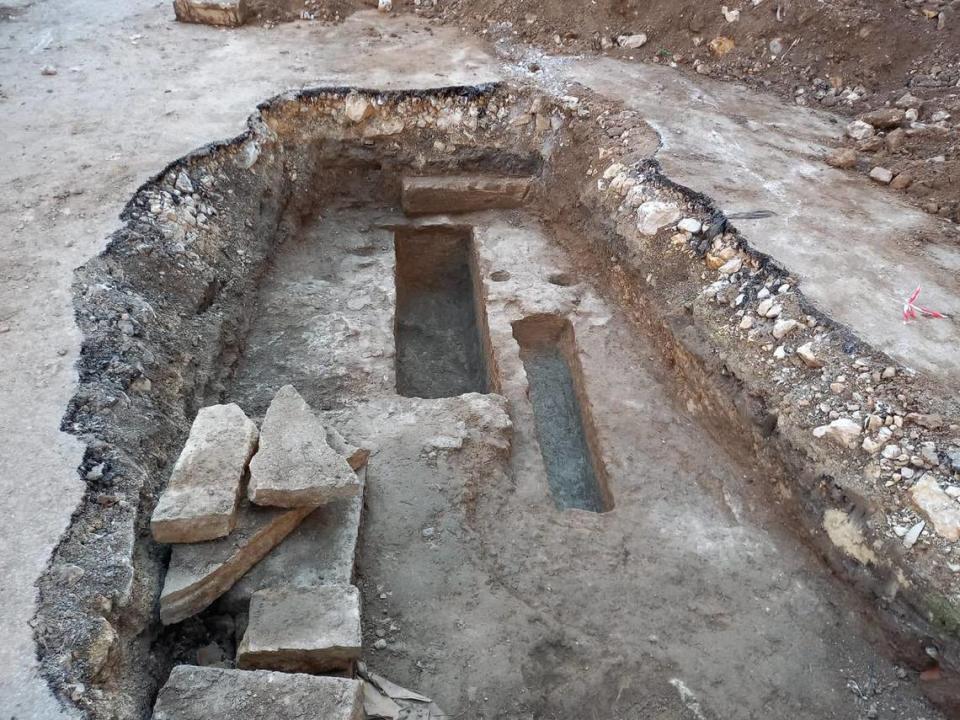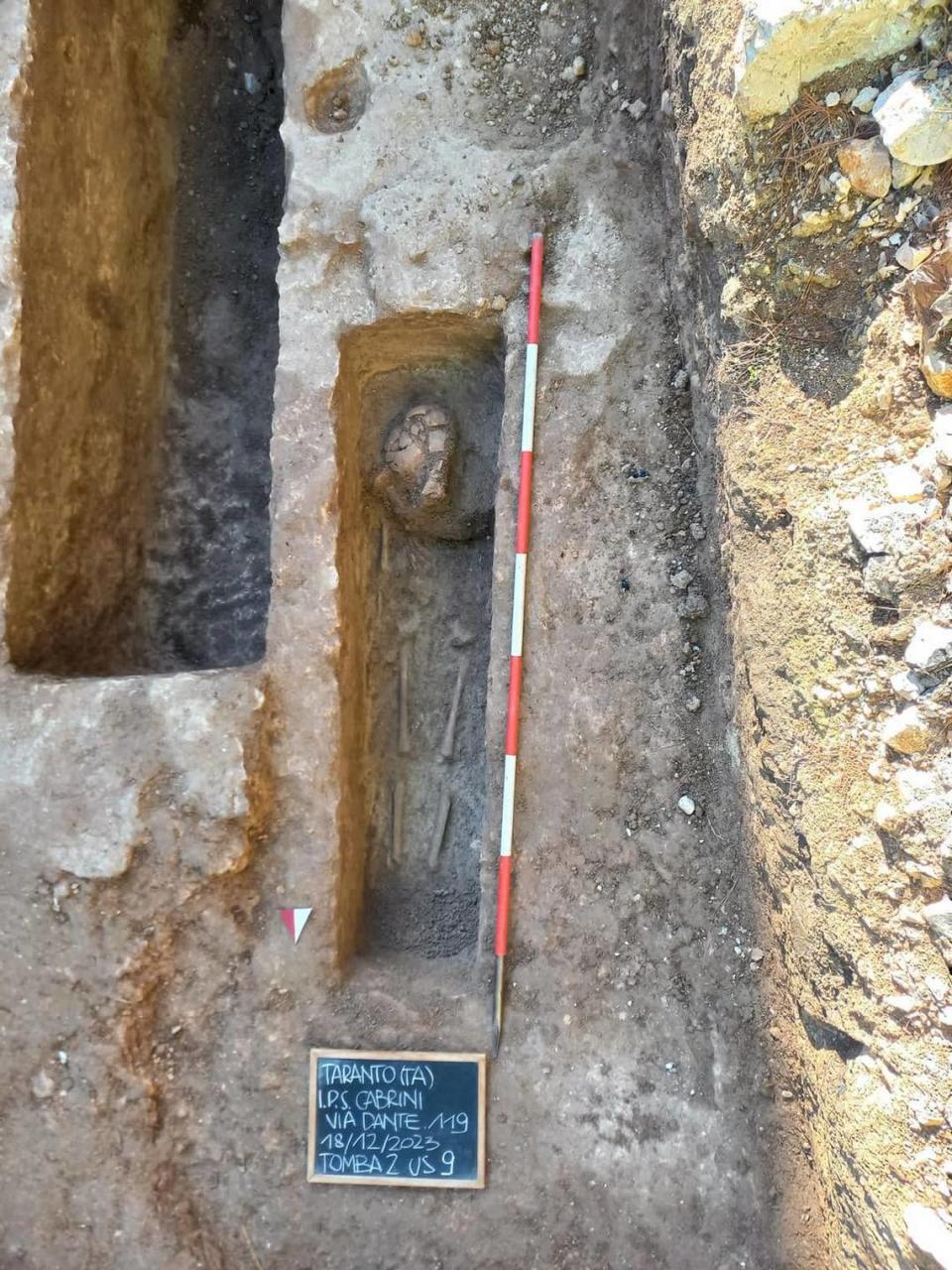Electrical workers uncover ancient Spartan graves — filled with skeletons and relics
While laying electrical cables beneath a street in Italy, workers unearthed three ancient tombs filled with relics and remains.
The burial site — believed to date back at least more than 2,000 years — was found in Taranto, a city located on the southern tip of the Italian peninsula.
While one of the tombs was empty, the other two were found to contain skeletons, according to a Jan. 18 news release from the National Superintendence for Underwater Cultural Heritage, a division of the country’s Ministry of Culture.

The first skeleton, believed to be a female, was found buried alongside funerary goods, including a bronze ring and black ceramics, while the second set of remains belonged to a young individual and was buried without any items, officials said.
The graves are presumed to belong to Greek Spartans who settled the city in the eighth century B.C.
The Spartans were residents of the powerful city state of Sparta, located in southeastern Greece. The city of Taranto is considered to be their only colony, according to research presented at Oxford University in 2013.
Relations between the indigenous population and the Spartans, while long believed to be hostile, may have instead been characterized by peaceful coexistence — at least initially.
“Only once the Greeks became more established in the region and intensified their power base may relations have degenerated,” researchers said.

Also discovered near the burials was a large, 2-foot-deep waste pit, which was filled with ceramic fragments and a roof fixture featuring a Gorgon, a mythical monster of Greek origin.
While the pit has not yet been precisely dated, a preliminary analysis revealed it was likely in use sometime between the sixth and third centuries B.C.
The findings have been reburied and work is underway to ensure they remain protected, officials said.
Google Translate was used to translate a news release from the Italian Ministry of Culture.
Underwater ‘tank’ turns out to be ancient statue on seafloor near Italy, photos show
Extremely rare 800-year-old gold ring found in Poland castle. See its unique engraving
247-year-old lost gold coin — from defunct republic — discovered by metal detectorist
